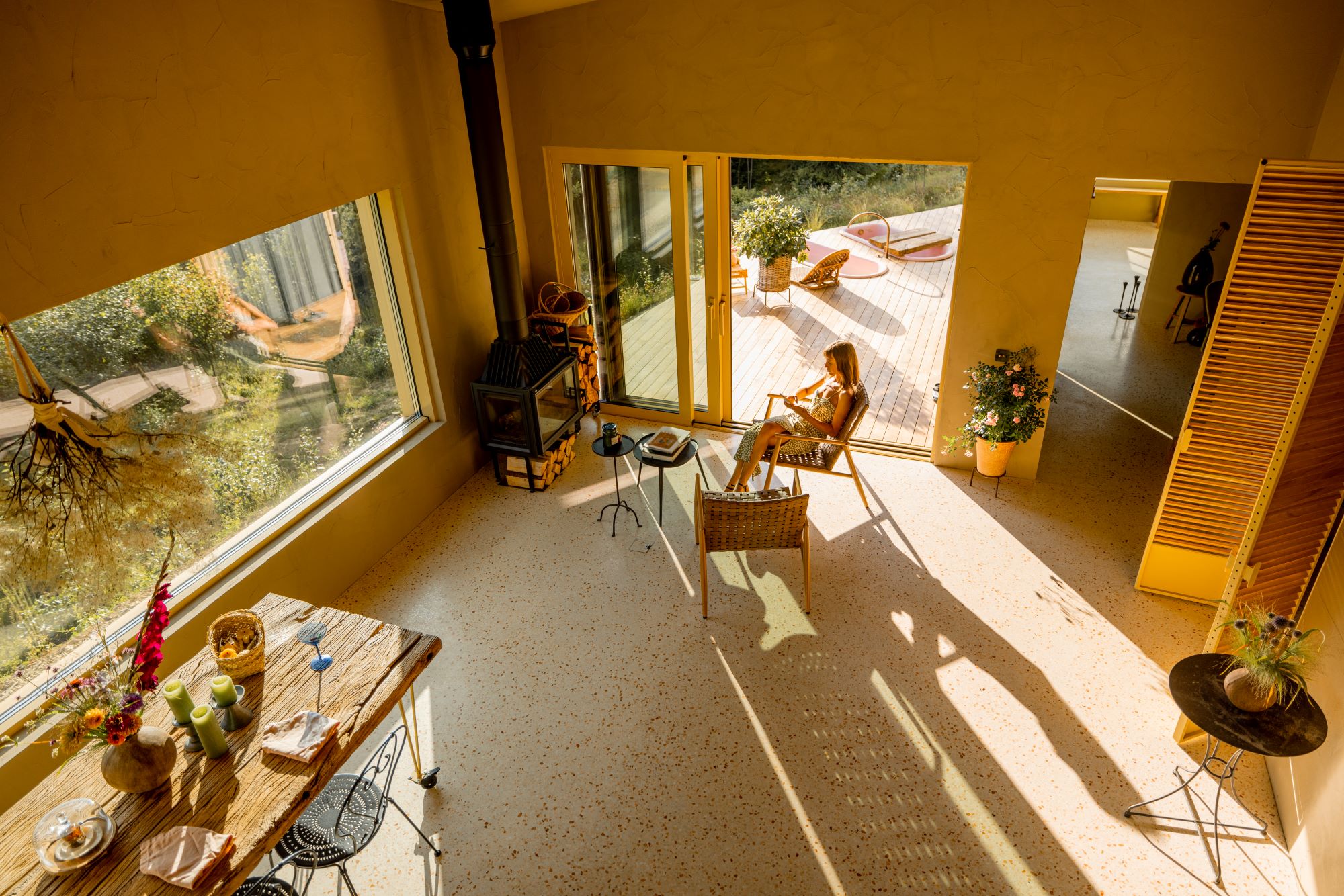
The Healthy Homes Standards in New Zealand are critical regulations ensuring rental properties provide safe, warm, and dry living conditions for tenants. Effective since 1 July 2019, these standards address five key areas: heating, insulation, ventilation, moisture ingress and drainage, and draught stopping. Understanding these requirements helps landlords maintain compliance and create healthier environments for tenants. If you are needing a healthy homes assessment, feel free to reach out to our team.
1. Heating Standard: Ensuring Warmth
Proper heating is vital to maintaining a comfortable living environment and preventing health issues caused by cold and damp conditions. Landlords must provide heating in the main living room that can maintain a minimum temperature of 18°C, as recommended by the World Health Organization.
Key Requirements
- Approved Heating Devices:
- Heat pumps
- Wood burners
- Pellet burners
- Flued gas heaters
- Prohibited Devices:
- Open fires
- Unflued gas heaters (due to health and safety risks)
How to Calculate Heating Requirements
Use the heating assessment tool provided by Tenancy Services to determine the appropriate heater size and capacity for your rental property. The calculation is based on factors like the size of the room and the climate zone.
Example:
A rental property in Auckland with a 30m² living room will typically require a heat pump capable of heating this space efficiently. Open fireplaces, even if present, cannot be relied upon to meet this standard.
2. Insulation Standard: Retaining Heat
Insulation helps retain heat in the home, making it more energy-efficient and reducing heating costs. All rental properties must meet the minimum R-values, which vary depending on New Zealand’s three climate zones.
Key Requirements
- Ceiling and Underfloor Insulation:
- Must be installed in all rental properties unless it is not reasonably practicable.
- Good Condition:
- Insulation must be free from gaps, damage, or dampness.
- Exemptions:
- Properties that already comply with the 2021 Building Code insulation requirements are considered compliant.
Climate Zone R-Values
- Zone 1 (Northland, Auckland): R 2.9 (ceiling), R 1.3 (underfloor)
- Zone 2 (Wellington, Waikato): R 2.9 (ceiling), R 1.3 (underfloor)
- Zone 3 (South Island): R 3.3 (ceiling), R 1.3 (underfloor)
Example:
A Wellington rental property must ensure insulation in the ceiling meets or exceeds R 2.9, and the underfloor insulation meets R 1.3.
3. Ventilation Standard: Improving Air Quality
Ventilation prevents mold and dampness, which can lead to health problems and structural damage.
Key Requirements
- Windows and Skylights:
- At least one window or skylight must open in living rooms, dining rooms, kitchens, and bedrooms.
- Extractor Fans:
- Mandatory in kitchens and bathrooms, with fans venting to the outside of the property to effectively remove moisture.
Example:
A kitchen in a Christchurch rental must have an extractor fan above the stove or in the wall, venting directly outdoors. Relying on a window for ventilation is insufficient for compliance.
4. Moisture Ingress and Drainage Standard: Preventing Dampness
Proper moisture control is essential to reduce dampness and protect tenant health.
Key Requirements
- Efficient Drainage Systems:
- Gutters, downpipes, and drains must effectively remove stormwater, surface water, and groundwater.
- Moisture Barriers:
- Properties with enclosed subfloor spaces must have a ground moisture barrier installed to prevent moisture from rising into the home.
Example:
A rental home in Rotorua with a wooden floor and enclosed subfloor must have a polythene sheet installed as a moisture barrier to meet the standard.
5. Draught Stopping Standard: Eliminating Unwanted Airflows
Sealing gaps and stopping draughts improve energy efficiency and tenant comfort.
Key Requirements
- Gaps and Holes:
- Seal all gaps or holes in walls, ceilings, floors, windows, doors, and skylights.
- Unused Fireplaces:
- Must be sealed or their chimneys blocked to prevent draughts.
Example:
A rental property in Dunedin with a disused fireplace must close the chimney with a cap or seal to eliminate cold air from entering the home.
Compliance Deadlines for Healthy Home Standards
Compliance deadlines depend on tenancy types and agreements. Here are the key dates:
- 1 July 2021: All boarding houses (except Kāinga Ora or registered Community Housing properties) must comply.
- 1 July 2024: All Kāinga Ora and registered Community Housing Provider houses must comply.
- 1 July 2025: All private rental properties must comply.
For Private Landlords:
Landlords must comply within 120 days of any new or renewed tenancy starting on or after 28 August 2022.
Why Healthy Homes Standards Matter
These standards improve tenant health and well-being by ensuring warm, dry, and energy-efficient homes. They also reduce long-term maintenance costs for landlords by preventing mold and dampness.
Example:
A well-insulated rental property in Invercargill not only keeps tenants warm but also reduces heating bills and minimizes structural damage caused by condensation and dampness.
FAQs About Healthy Home Standards
Q: What happens if a landlord fails to comply?
Landlords face fines of up to $7,200 under the Residential Tenancies Act.
Q: Are there exemptions?
Yes, properties may qualify for exemptions based on technical feasibility or specific usage conditions.
Q: How can tenants check compliance?
Tenants can request a copy of the Healthy Homes compliance statement provided with their tenancy agreement.
Conclusion: Stay Ahead of Deadlines
By meeting the Healthy Homes Standards, landlords not only ensure compliance but also contribute to a healthier rental market in New Zealand. For detailed requirements, visit the official Tenancy Services website.
